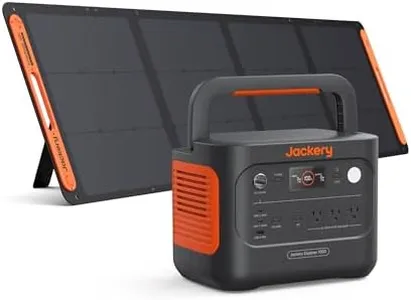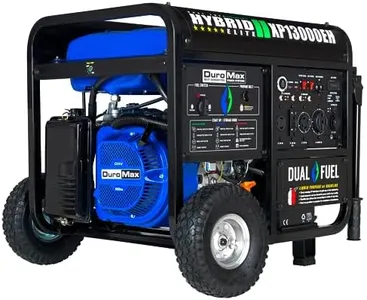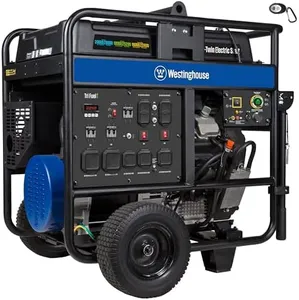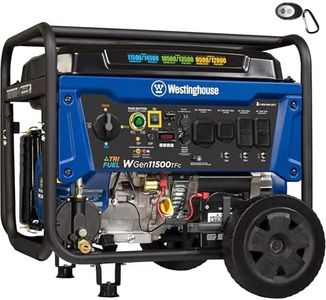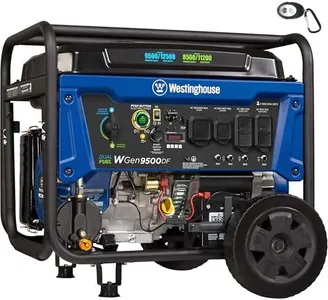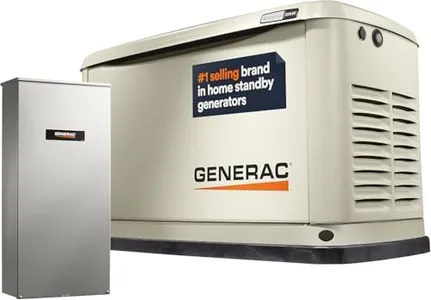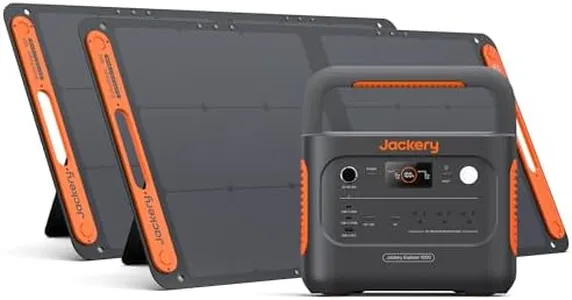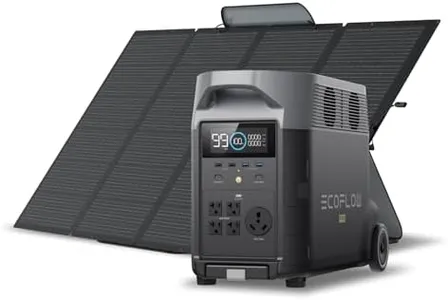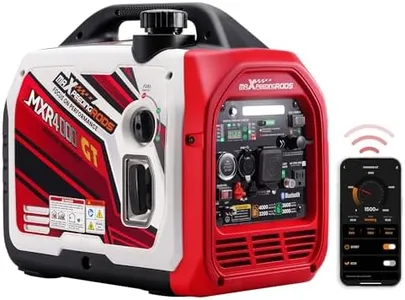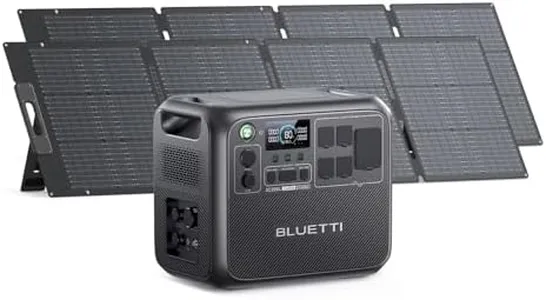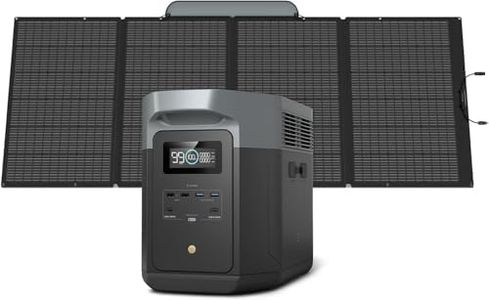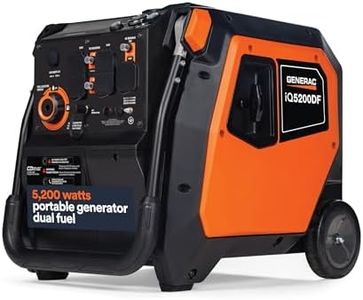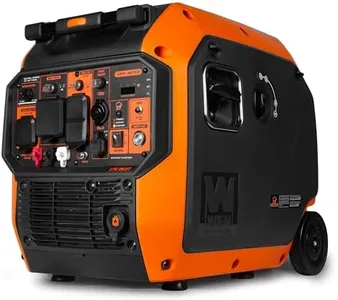10 Best Home Generators 2025 in the United States
Recommended lists
Our technology thoroughly searches through the online shopping world, reviewing hundreds of sites. We then process and analyze this information, updating in real-time to bring you the latest top-rated products. This way, you always get the best and most current options available.

Our Top Picks
Winner
DuroMax XP13000EH 13,000-Watt Dual Fuel Portable Generator - Gas & Propane, Electric Start, Whole Home Backup Power, Transfer Switch Ready, RV & Emergency Ready
Most important from
3701 reviews
The DuroMax XP13000EH Dual Fuel Portable Generator stands out in the home generator category due to its impressive power output, capable of delivering 13,000 watts (with a steady 10,500 watts running), making it suitable for keeping your entire home operational during outages. Its dual fuel capability means you can run it on either gasoline or propane, offering flexibility based on fuel availability. The electric start feature is incredibly user-friendly, allowing for hassle-free starting, which can be particularly beneficial during emergencies.
Portability is another strong suit; despite weighing 234 pounds, it is designed with no-flat tires and a foldable handle, enabling easier transport across various terrains. Constructed with a heavy-duty metal frame, this generator is built to withstand harsh conditions, showing durability that can last for years.
The noise level can be a concern, as larger generators tend to be louder, which might be bothersome in residential areas during nighttime use. Additionally, while the 0.5-gallon tank offers decent runtime, users may find themselves needing to refuel frequently for extended use. The generator’s size and weight could also be a drawback for those looking for a lightweight solution or requiring frequent mobility. The DuroMax XP13000EH is a robust option for individuals seeking a reliable, powerful, and versatile home generator.
Most important from
3701 reviews
Westinghouse 28000 Peak Watt Tri-Fuel Home Backup Portable Generator, Remote Electric Start, Transfer Switch Ready, Gas, Propane, and Natural Gas Powered
Most important from
187 reviews
The Westinghouse 28000 Peak Watt Tri-Fuel Generator is a powerful option for homeowners needing reliable backup power during outages. It offers a very high power output—up to 28,000 peak watts on gasoline and slightly less on propane and natural gas—which makes it suitable for running large homes or multiple appliances simultaneously. The tri-fuel capability is a significant advantage, allowing users to switch between gasoline, propane, and natural gas based on availability and preference. It can operate for up to 13 hours at a quarter load on a full tank of gas, which supports extended power outages. Starting the generator is convenient with a remote electric start, eliminating the need for manual pull-starting.
This generator includes useful features such as automatic low-oil shutdown for engine protection and idle control to reduce noise and fuel consumption when full power is not required. While heavy-duty models like this tend to be louder than smaller home generators, this unit may not be ideal if extremely quiet operation is necessary. Despite its weight of over 550 pounds, it is equipped with large, never-flat wheels and foldable handles to enhance mobility, balancing the power of a stationary unit with some portability. Multiple outlets compatible with transfer switches are included, allowing direct connection to a home's electrical system through a professional electrician, along with safety measures like overload protection and a CO sensor.
The main limitations are its size and weight, which could be challenging for some users despite the mobility features. Additionally, the high power output may exceed the needs of small homes or occasional users. This generator is best suited for larger homes or those seeking a versatile, heavy-duty backup power solution with multiple fuel options and a convenient electric start.
Most important from
187 reviews
Westinghouse 14500 Peak Watt Tri-Fuel Home Backup Portable Generator, Remote Electric Start, Transfer Switch Ready, Gas, Propane, and Natural Gas Powered
Most important from
1969 reviews
The Westinghouse 14500 Peak Watt Tri-Fuel Home Backup Portable Generator is a versatile and powerful option for home backup power. It offers impressive power output with 14,500 peak watts and 11,500 running watts using gasoline, 13,500 peak watts and 10,500 running watts on propane, and 12,000 peak watts and 9,500 running watts on natural gas. This makes it suitable for large homes with significant power needs during outages or as a reliable source of portable power for outdoor activities or projects.
One of the standout features is its tri-fuel capability, allowing it to run on gasoline, propane, or natural gas, providing flexibility based on availability and convenience. The generator can run up to 19 hours on a full 9.5-gallon fuel tank, and around 7 hours on a 20 lb. propane tank, which is quite good for extended power outages. Starting the generator is made easy with a remote electric start, which is very convenient, especially in emergencies. Additionally, it includes features like overload protection, automatic voltage regulation, and a CO sensor for added safety.
However, at 230 pounds, it is quite heavy and may not be easy for everyone to move around, despite being labeled as portable. Backed by a 3-year warranty and supported by a nationwide customer service network, it offers peace of mind. For those needing a robust and flexible backup power solution with the ability to use different fuel types, this Westinghouse generator is a strong option, though its weight may be a consideration for some users.
